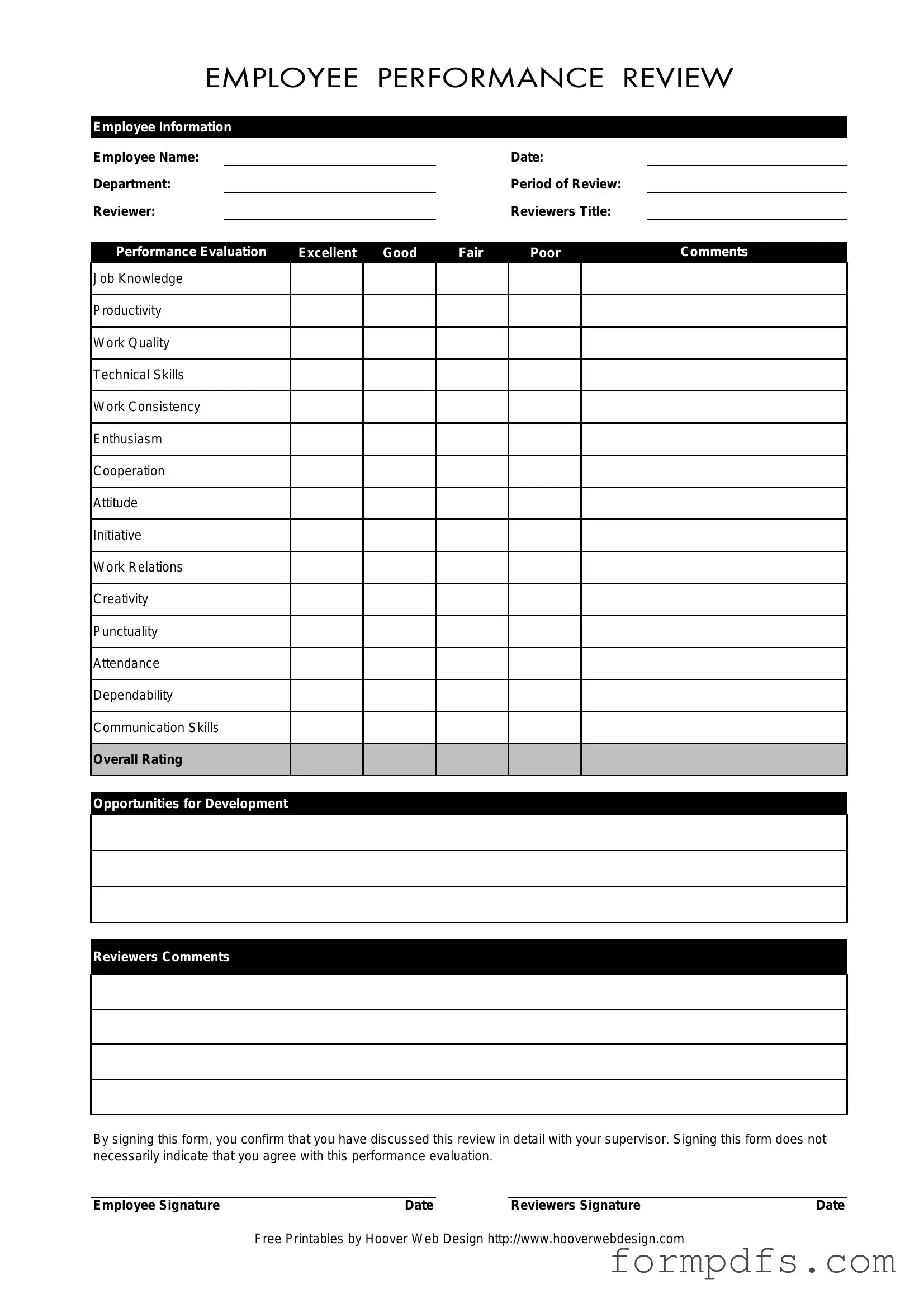What is the purpose of the Employee form?
The Employee form is designed to facilitate performance evaluations within an organization. It allows supervisors to assess various aspects of an employee's work, including job knowledge, productivity, and communication skills. The form serves as a structured way to provide feedback and identify areas for development, ultimately fostering employee growth and enhancing overall performance.
What information is required to complete the Employee form?
To complete the Employee form, several key pieces of information are necessary. This includes the employee's name, the date of the review, the department, the period of review, and the reviewer's details, such as their title. Additionally, the form requires evaluations on various performance criteria, along with comments to support the ratings given.
How are performance ratings determined on the Employee form?
Performance ratings are determined based on the reviewer's assessment of the employee's performance across multiple categories. These categories include job knowledge, work quality, and cooperation, among others. Reviewers typically consider specific examples and evidence of the employee's work when assigning ratings of excellent, good, fair, or poor. This comprehensive approach ensures that evaluations are fair and reflective of the employee's contributions.
What happens after the Employee form is signed?
Once the Employee form is signed by both the employee and the reviewer, it indicates that the performance review discussion has taken place. However, signing does not imply agreement with the evaluation. The signed form may be stored in the employee's personnel file and can be used for future reference, especially during subsequent performance reviews or discussions regarding promotions and professional development.
Can an employee dispute their performance evaluation?
Yes, employees have the right to dispute their performance evaluations if they believe the assessment is inaccurate or unfair. It is advisable for employees to first discuss their concerns with their supervisor. If the issue remains unresolved, they may consider following the organization's formal grievance procedures, if available. Open communication is key in these situations.
What are some opportunities for development mentioned on the form?
The form provides a section for reviewers to identify opportunities for development tailored to the employee's needs. This may include suggestions for additional training, mentorship, or skill-building activities. By highlighting these opportunities, the form encourages continuous improvement and supports the employee's career growth within the organization.
How often should the Employee form be completed?
Typically, the Employee form is completed during scheduled performance reviews, which may occur annually, semi-annually, or quarterly, depending on the organization's policies. Regular evaluations help ensure that employees receive timely feedback and can track their progress over time. Frequent reviews can also enhance communication between employees and supervisors, leading to a more engaged workforce.
